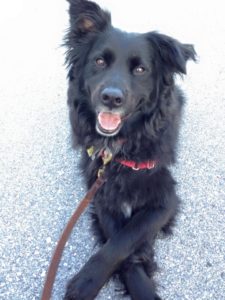House training is a key skill to master to be successful with their new dog or puppy. House training can be challenging, but it doesn’t have to be. We get asked about how to house train a dog a lot. Here are our key points to help you achieve house training success!
House training Secrets:
How to prevent house training accidents
– If you can’t keep your eyes on your dog crate him/her. He/she have a toy or bone while crated. Crating isn’t a punishment. Crating is a way to manage the environment so the dog can’t make a mistake.
– Confine your dog to the room you are in actively supervising them with crates or other barriers. Your dog should not be able to wander out of the room.
– Put your dog on a house training schedule – take him/her out every 2 hours – more often if she continues to have frequent accidents (every hour if your dog is younger than 12 weeks).
What do if your dog has a house training accident
– Do NOT yell, scold, punish or rub your dog’s face in their accident. Not only does NOT help your dog learn where to learn to go, it can cause setbacks in the house training process.
– Clean up all house training accidents with a cleaning product that is designed for dogs. We love Nature’s Miracle.
How to know when you dog needs to go
– When does your dog need to potty? After a training session of more than 10-15 minutes. When they have been playing vigorously. When they wake up from a nap. 20-30 minutes after eating.First thing in the morning and last thing at night.
– Anytime your dog wanders away toward another room or an out of the way part of a room, assume your dog is looking for a place to go to potty. Call your dog back to you (and if he/she doesn’t come go get them). If it has been more than a hour since your dog’s last potty break (or if he/she tries to wander away more than once) say “let’s go outside! time to go potty” (or something similar that you will say every time she goes out for a potty break) and take her outside.
– If you see your dog start to walk in a circle, be overly sniffy on the rug or mat, start to squat or otherwise look like he/she is about to go – say “time to go potty!” in a happy and excited voice and head toward the door, calling him/her as you go. The more successes your dog has outside (and the fewer accidents inside) the more likely your dog will be to go outside to go potty.
Not going? Going inside right after going outside?
– Does your dog go out and pee and then come in and pee again? If so, give your dog time to pee twice before bringing him/her in.
– If you take your dog outside and you expect him/her to pee and/or poop and your dog doesn’t go, when you come back in put your dog immediately in the crate. Take him/her out again in 10-15 minutes. Do not allow your dog to walk around the house “full”, you will have a house training accident on your hands if you do.
Keep a House Training Log
– Keep a log of his/her bodily functions on paper where your family can see/add to it. Track day of the week, time of day, pee or poop. Track whether it was a success (done outside) or failure (done inside). Note who was supervising (or supposed to be supervising) the dog too. This log will give you a clear idea on whether housebreaking is working. It will also show who needs a refresher on what it means to “actively supervise” the dog. If you suspect your dog has a medical symptom that you need to share with your vet (i.e. my puppy pees a little bit 25 times per day) the log will show this.
Fine tuning the house training process
– As your dog starts to squat to pee say “go potty” or whatever you want to call it. Say this in a calm voice (almost like you sound bored – not excited and not reaching for a treat). As soon as your dog finishes the FIRST thing he/she does outside (first pee or first poop) – give your dog a super awesome treat right there as soon as he/she takes that first step after going. Don’t mess with treat bags or do anything to distract your dog from the task at hand so you don’t interrupt the process.
– Once your dog has the gist of house training, consider teaching him/her to ring a bell to go outside. There are pros and cons to doing this, which we will cover in a later post.
Need help with house training? Give us a call or email us!
Need more getting started tips? Check out our posts on how to Start Our Right with Your New Puppy
Starting the process to add a dog to your family and need some help understanding how rescues work? how to select a dog? how to get started on training? We have a service designed just for that!
Pepper’s Paws, LLC provides in home dog training for basic manners, behavior problems, and fear aggression in Rehoboth Beach, DE. We also offer Zoom dog training lessons for people who do not live in our private lessons service area.
Head trainer Deb Murray, is Certified Canine Behavior Consultant (CBCC-KA) and Certified Professional Dog Training (CPDT-KA) by the Certification Council of Professional Dog Trainers, a Fear Free Certified Trainer, an AKC Evaluator, and a Distinguished Graduate and Mentor Trainer for the Catch Canine Academy.